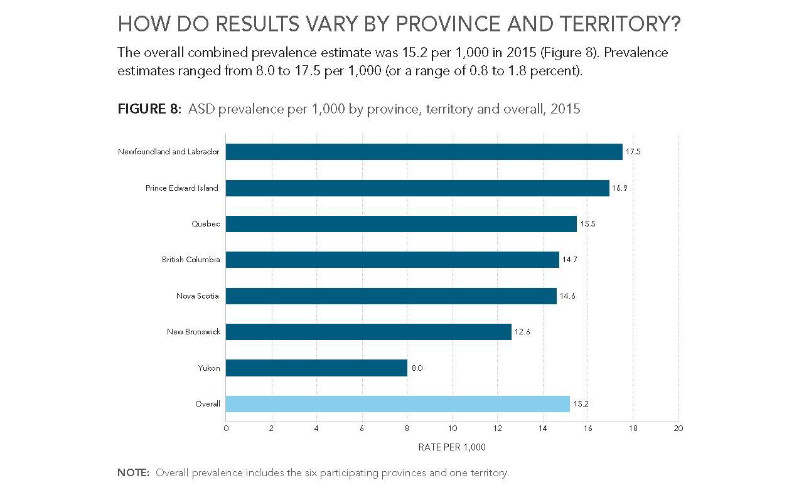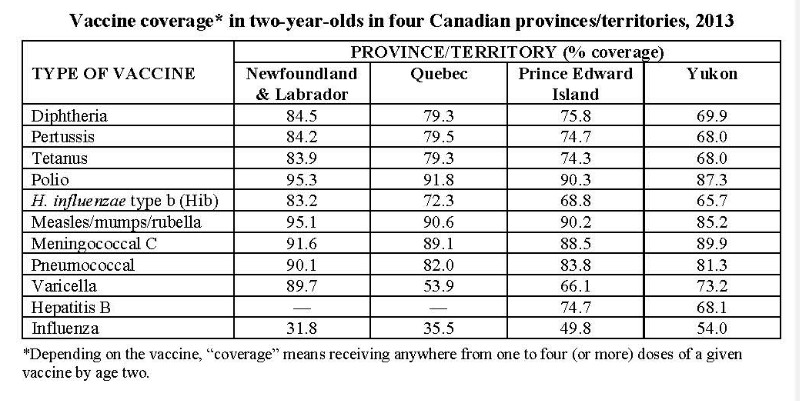Official Canadian Data Show That There Is More Autism in Regions Where Vaccine Coverage Is Highest

This article was originally posted on https://worldmercuryproject.org/news/official-canadian-data-show-that-there-is-more-autism-in-regions-where-vaccine-coverage-is-highest/
 Rates of autism spectrum disorder (ASD) continue to soar worldwide, with average prevalence estimated to be around 1.5% in developed countries. This estimate appears to be spot-on for Canada, which reported in March 2018 that autism (as of 2015) affected 1 in 66 children and youth (1.52%). These numbers place Canada among the “top ten” for autism among North American, European and Asian countries.
Rates of autism spectrum disorder (ASD) continue to soar worldwide, with average prevalence estimated to be around 1.5% in developed countries. This estimate appears to be spot-on for Canada, which reported in March 2018 that autism (as of 2015) affected 1 in 66 children and youth (1.52%). These numbers place Canada among the “top ten” for autism among North American, European and Asian countries.
The Canadian public had been expecting the Public Health Agency of Canada to release these first-ever nationally representative ASD numbers since 2016. The data come from the National ASD Surveillance System (NASS), which, according to the Public Health Agency, is intended to pinpoint the number of young people diagnosed with ASD “both across regions and over time.” The Agency’s report provides answers on both fronts—showing steady increases in ASD prevalence since 2003 and notable differences across regions—but the document declines to speculate on factors that might account for the regional differences.
What might explain the variation in ASD prevalence within Canada’s borders? … autism prevalence is highest in the Canadian provinces that also have the highest vaccination coverage.
ASD prevalence by province and territory
NASS compiles administrative data from the health, education and social services sectors for children and youth (aged 5-17 years) who have a confirmed ASD diagnosis. Seven of Canada’s 13 provinces and territories provided information for 2015, including six provinces (British Columbia, New Brunswick, Newfoundland and Labrador, Nova Scotia, Prince Edward Island and Quebec) and one territory (Yukon). As the figure below shows, ASD prevalence in 2015 varied among the seven regions, with the highest prevalence noted in the three provinces of Newfoundland and Labrador (1 in 57), Prince Edward Island (1 in 59) and Quebec (1 in 65). In comparison, prevalence was substantially lower in the Yukon territory (1 in 125).

The three high-prevalence provinces also provided retrospective data that allowed for an assessment of temporal trends. For the slightly narrower age group of 5-14 year olds, the historical data showed sizeable increases in ASD prevalence from 2003 to 2015 (Prince Edward Island and Quebec) and from 2003 to 2009 (Newfoundland and Labrador):
- Newfoundland and Labrador: from 6 to 19.6 per 1,000 (a 227% increase)
- Prince Edward Island: from 5 to 17.7 per 1,000 (a 254% increase)
- Quebec: from 3.5 to 15.7 per 1,000 (a 349% increase)
Explaining the regional differences
What might explain the variation in ASD prevalence within Canada’s borders? The NASS report does not offer any comments. However, an observant health practitioner in British Columbia has noticed a compelling parallel: autism prevalence is highest in the Canadian provinces that also have the highest vaccination coverage. This evidence comes from a 2013 survey carried out by the very same Public Health Agency of Canada, which examined vaccine coverage by province/territory and type of vaccine (see table). The survey showed that coverage by age two was generally lower (with a few exceptions) in Yukon territory than in the three high-autism provinces. For Newfoundland/Labrador and Quebec, the percentage point difference in vaccine coverage was anywhere from five to fifteen percentage points higher than in Yukon; Prince Edward Island’s lead in vaccine coverage compared to Yukon was less substantial.

Correlation is not causation but…
Any researcher worth their salt knows that while correlation is not the same as causation, a plausible association between two variables is often an important clue worth investigating. The substantially lower ASD prevalence in a region that happens to have markedly lower vaccine coverage is one such clue. Another strand of evidence that simply cannot be chalked up to coincidence are the tens of thousands of parental reports of children regressing into autism after receiving one or more vaccines. Unfortunately, Canadian parents who suspect that their autistic child was vaccine-injured have nowhere to turn, because Canada remains “one of few western countries that denies the reality of vaccine injuries and provides no avenue whatsoever to compensate vaccine injury victims and their families.” It would behoove Canada’s public health officials to take a closer look at their own data and start taking meaningful steps to prevent the country’s ASD numbers from climbing still further.
This article was originally posted on https://worldmercuryproject.org/news/official-canadian-data-show-that-there-is-more-autism-in-regions-where-vaccine-coverage-is-highest/ The information provided by the World Mercury Project website is not intended as medical or dental advice applicable to the treatment of a specific patient. The intention is to provide a forum for the exchange of scientific ideas, research and other information on mercury in all its forms, the injuries it causes through dental amalgams, vaccines, medicines and the environment, and to present helpful information to those who have been personally affected by mercury exposure. The information contained herein is not intended to diagnose, treat, prevent, or cure any disease. Parents, caregivers, consumers, patients, individuals and health practitioners must use their own judgment concerning specific treatment options. The World Mercury Project authors, editors, and principals disclaim any liability or responsibility to any person or organization for any loss, damage, expense, fine, injury, or penalty that may arise or result from the use of any information, recommendations, opinions and/or errors on this website or in our articles. Any use of, or reliance on, information reflected on this website or in our articles is solely the responsibility of the viewer.
